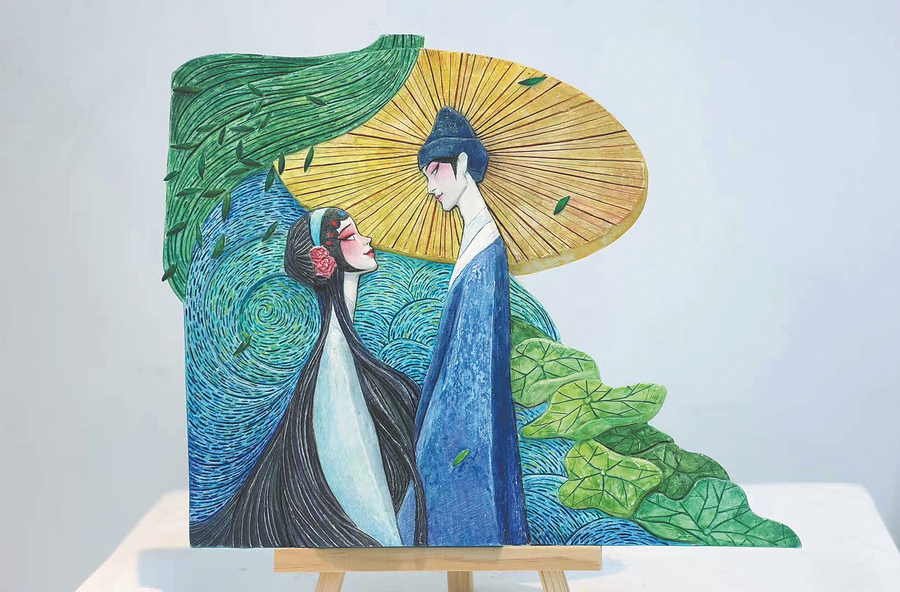

It's her first exhibit and she was happy to see that the audience could tell that the sculptures were characters from the legend at first sight.
"Sculpture is a valuable exercise for art students as it allows us to approach an object from multiple dimensions, offering a more rational and diverse perspective," she says.
Qian Yunke, Zheng's tutor, thinks Zheng's works are characterized by a refined and aesthetic approach. "Unlike other artists who employ deconstruction and exaggeration, her works feature vivid forms, concise sculptural language and subtle color palettes. The theatrical masks are primarily depicted on the facial expressions, while the costumes maintain an elegant simplicity," Qian says.
Qian thinks choosing the theme of traditional Chinese opera in sculptural creations undoubtedly presents its challenges, but at the same time, "creating sculptures with a focus on Chinese opera is not only a creative transformation but also an innovative development of China's outstanding traditional culture".
Qian thinks that one of Zheng's greatest strengths in her learning process is her ability to incorporate her painting skills into three-dimensional sculptural forms. "This can be attributed to her early development in the fields of comics and illustrations, which have greatly influenced her artistic approach," he adds.
Zheng was attracted to drawing as a child. She chose sculpture as she wants to accept more challenges after years of painting.
During her five years of study, she focused on using different materials to make sculptures. For her graduation work, she used paper pulp which was initially challenging.
Zheng accepted an offer to work for a video game company as a key animator and she is looking forward to the new job. "In the future, I aspire to work on innovative projects, such as creating original games or telling compelling stories," she says.